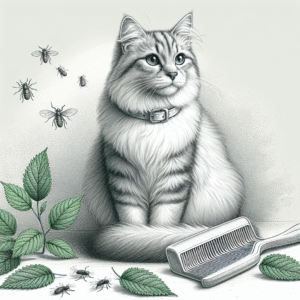
Introduction
Cats have been beloved companions for centuries, offering comfort, companionship, and endless entertainment. As responsible cat owners, ensuring the health and wellbeing of our feline friends is a top priority. One significant aspect of this responsibility is securing reliable cat insurance. This article will guide you through essential cat insurance tips, helping you make informed decisions that ensure your cat’s health and your peace of mind.
Understanding Cat Insurance
Before diving into tips, it’s crucial to understand what cat insurance is. Cat insurance is a type of pet insurance policy that helps cover the cost of veterinary care for your cat. It can include a variety of coverage options such as accident and illness, routine wellness checks, and even dental care. Having insurance can mean the difference between affording life-saving treatments or facing the difficult decision to forgo care due to cost.
Assessing Your Cat’s Needs
Different cats have different health needs based on factors like age, breed, and lifestyle. Understanding these needs will help you choose the most suitable insurance policy.
Age Considerations
Kittens, adult cats, and senior cats each have unique health challenges. Kittens may need more frequent vet visits for vaccinations and check-ups, while senior cats might require more attention for age-related conditions. Choose a policy that evolves with your cat’s life stage.
Breed-Specific Concerns
Certain breeds are predisposed to specific health conditions. For instance, Maine Coons are prone to hypertrophic cardiomyopathy, while Persians may face respiratory issues. Researching breed-specific risks can guide you in selecting a policy that covers potential hereditary or congenital conditions.
Lifestyle Factors
Consider whether your cat is an indoor or outdoor cat. Outdoor cats may face more risks such as accidents or infectious diseases, which might necessitate broader coverage.
Types of Cat Insurance Coverage
Understanding the different types of coverage available can help you tailor your insurance policy to best suit your cat’s needs.
Accident-Only Coverage
This basic type of insurance covers treatments related to accidents, such as broken bones or ingestion of foreign objects. It’s a cost-effective option if you’re primarily concerned about unexpected injuries.
Accident and Illness Coverage
A step up from accident-only, this coverage includes illnesses like cancer, urinary tract infections, and diabetes. It’s a comprehensive option providing peace of mind for a wide range of potential health issues.
Comprehensive Coverage
Comprehensive policies often include accident and illness coverage, along with routine care like vaccinations, flea control, and dental check-ups. Though more expensive, it covers preventive care, which can be crucial in maintaining your cat’s health.
Tips for Choosing the Right Cat Insurance
Selecting the right insurance policy involves careful consideration. Here are some tips to guide you:
Compare Different Providers
Research various insurance providers to compare their policies, coverage limits, and exclusions. Online comparison tools can be helpful, but also consider reading customer reviews to gauge satisfaction levels.
Understand Policy Exclusions
Every policy has exclusions—conditions or treatments that aren’t covered. Common exclusions might include pre-existing conditions or certain hereditary diseases. Understanding these will prevent unpleasant surprises when you need to make a claim.
Consider Deductibles and Premiums
Deductibles are the amount you pay out-of-pocket before insurance kicks in, while premiums are the regular payments you make for the policy. Balancing these costs according to your budget and your cat’s health needs is crucial.
Look for Flexible Policies
Some insurers offer customizable policies where you can add or remove coverage options. This flexibility can be beneficial as your cat ages or as your financial situation changes.
Check the Reimbursement Level
Reimbursement levels indicate the percentage of the vet bill that the insurance will cover after the deductible. Higher reimbursement levels mean lower out-of-pocket expenses, but typically come with higher premiums.
Making the Most of Your Cat Insurance
Once you have selected a policy, use it effectively to maximize its benefits.
Regular Vet Visits
Even with insurance, regular vet visits are essential for your cat’s health. Routine check-ups can catch potential health issues early, reducing the need for more expensive treatments later.
Maintain a Healthy Lifestyle
A healthy lifestyle for your cat, including a balanced diet and regular exercise, can prevent many illnesses. This proactive approach not only enhances your cat’s quality of life but can also lead to fewer insurance claims.
Keep Detailed Records
Maintain detailed records of your cat’s medical history, including vaccinations, treatments, and any health issues. This information can streamline the claims process and ensure you receive the appropriate reimbursements.
Conclusion
Securing the right insurance for your cat is an investment in their health and your peace of mind. By understanding the nuances of cat insurance and carefully selecting the right policy, you can ensure that your feline companion receives the best possible care without financial strain. Remember, a well-cared-for cat is a happy cat, and a happy cat makes for a peaceful home filled with joyful purrs.
#ChatGPT assisted in the creation of this article.








